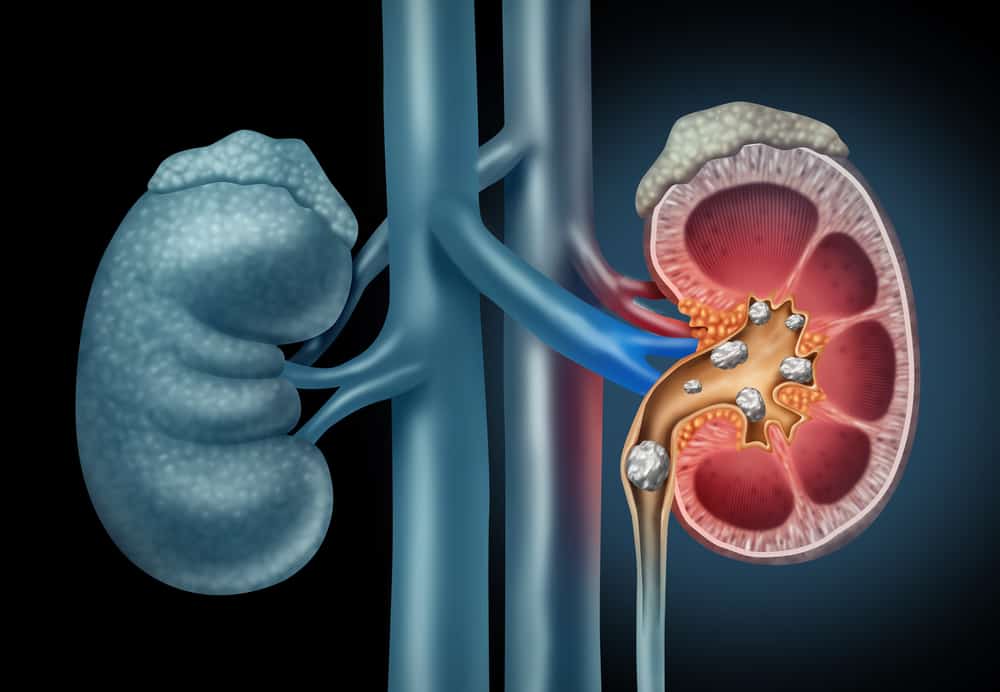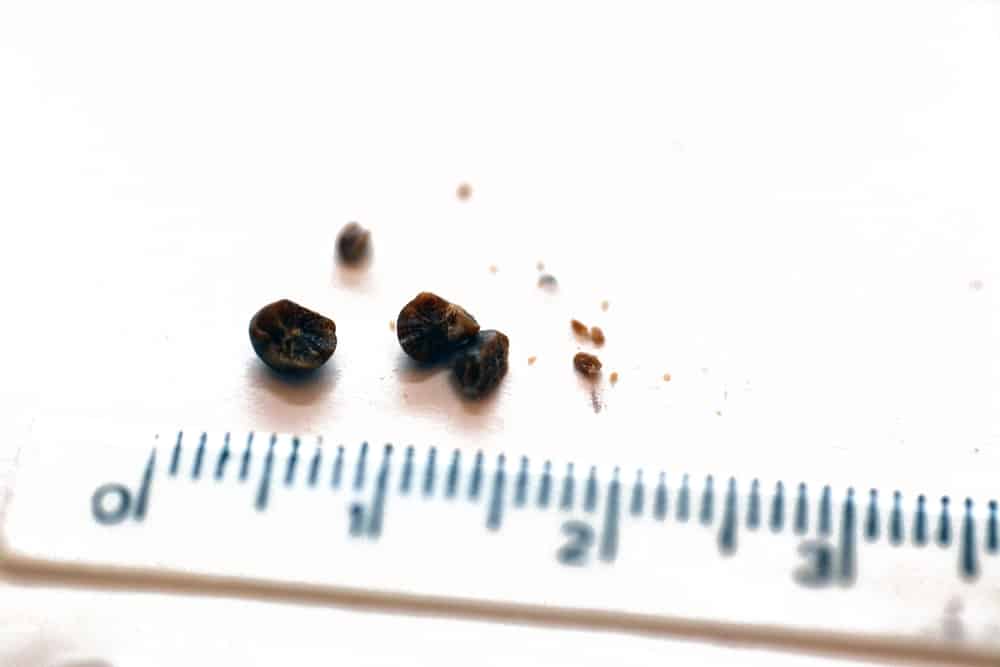Largest Kidney Stone Ever Recorded
While the human body is an amazing structure, it is not without the potential for some imperfections. Aside from malformations that can occur in development, the organs of adult humans may be subject to problems. Kidney stones are among the issues that an adult can face. The outright misery these formations can cause is something that nobody wants to deal with. Yet, as with many things, humans like to keep track of superlative specimens. That’s why we’re going to talk about the largest kidney stone ever recorded.
Not only will you learn about the largest deposit ever formed in the human body, but we’ll show you how they feel and why you may get one. You may feel a sudden sense of overwhelming pity and empathy for the person that possessed this record-breaking mineral buildup.
What Is a Kidney Stone?

Lightspring/Shutterstock.com
Before we get into the discussion about the largest kidney stone, we need to know what we’re talking about. A kidney stone, also called renal calculi, is a deposit of minerals and salts that forms inside of the kidneys.
These deposits are formed by the chemicals present in human urine. Generally speaking, kidney stones can form from urate, calcium, phosphate, oxalate, and xanthine. Typically, calcium oxalate stones are the most common with urate-based ones appearing often, too.
In the right conditions, especially when the body is lacking hydration, these chemicals begin to gather other elements and form into a solid mass until it is excreted from the body.
These deposits live up to their name and become stone-like. Kidney stones can be smaller than a grain of rice and have jagged edges and crystallization that make passing the stone, and urinating it out, very painful.
Typically, the kidneys stop these deposits from forming. When they fail to do so, though, the individual possessing the kidney stone is in for a world of hurt. The less troublesome stones measuring 4 mm or less will usually pass on their own. Larger ones may need medical intervention.
What Happens if You Have a Kidney Stone?
People that have kidney stones can face a variety of difficulties from mild discomfort to surgery. Most of the time, these buildups don’t cause problems until they pass into the ureters, the tubes that connect the bladder to the kidneys.
The deposits will restrict urine flow and cause issues with the kidney, like swelling. Some of the common problems that people face when afflicted with one of these deposits are:
- Severe pain
- Burning sensation while urinating
- Constantly feeling the need to urinate
- Infections that cause fever and chills
- Cloudy urine or urine with atypical colors (pink, brown, red)
Most of the time, people that feel intense pain from kidney stones will see a doctor. Treatment will vary on the size of the stone and other factors such as if the deposit blocks urine flow.
If doctors think that the stone will pass on its own, they will send the individual home. They’ll prescribe medicine, especially pain medicine, and tell the individual to drink a lot of water. Yet, if the stone is too large, then other options are presented.
One option is called extracorporeal shock wave lithotripsy, a procedure where the sound waves are used to break up the stone without going inside the body. If the stone is too large, then a ureteroscopy or other more invasive types of surgery are used. However, most kidney stones resolve without surgery.
The Average Size of a Kidney Stone

Tamer Adel Soliman/Shutterstock.com
Now that we know what a kidney stone is, let’s take a look at the average size of them. These buildups can be about as small as a grain of sand. Those probably pass with little or no discomfort on the part of the person.
That being the case, it’s hard to know the average size of a deposit. Instead, you should know the average size of a kidney stone that causes problems. For example, a stone about 4 mm or less will not need medical intervention. It will pass from the body within a month or so.
On average, about 60 percent of stones between 4 mm and 6 mm pass on their own. Anything larger will probably need medical aid to pass.
Thus, the average kidney stone that causes problems is probably 5 to 6 mm large.
What Is the Largest Kidney Stone Ever Recorded?

Shidlovski/Shutterstock.com
The largest kidney stone ever recorded was 13 cm or 5.11 in wide at its widest point. The deposit was found in a patient named Vilas Ghuge, a police officer in Mumbai, who underwent surgery in February 2004 to remove the stone.
This massive buildup had no chance of passing through his body without medical aid. The stone was saved and later presented to the satisfaction of observers who deemed it the largest ever recorded.
Associated Risk Factors

ARTFULLY PHOTOGRAPHER/Shutterstock.com
By now, you are probably wondering what you should do to avoid these buildups. After all, nobody likes the idea of passing a kidney stone. According to experts, roughly 5% of the population is affected by kidney stones, and all people have an 8-10% chance of passing one in their lifetime.
Also, some elements of risk depend on a person’s lifestyle. For example, diet plays a major role in the development of kidney stones. When people eat too much sugar and meat, they become prone to these deposits forming in their bodies.
People that do not drink enough water are at a higher-than-average risk for kidney stones. The kidneys need water to dilute waste and keep the urinary tract free from buildups.
Other risk factors include obesity and a family history of kidney stones. Age is another risk factor, with people between the ages of 40 and 65 having the highest incidence of them. Fortunately, eating well, staying in a healthy weight range, and drinking enough water can reduce the likelihood of a stone occurring.
The largest kidney stone ever recorded was incredibly large compared to average ones. Although these buildups are common, people can do a lot to lower their risk of being afflicted. However, if you think you have one of these buildups occuring, it’s important to call your doctor.
That way, you can get the proper diagnosis and treatment as quickly as possible.
More from A-Z Animals
While the human body is an amazing structure, it is not without the potential for some imperfections. Aside from malformations that can occur in development, the organs of adult humans may be subject to problems. Kidney stones are among the issues that an adult can face. The outright misery these formations can cause is something that nobody wants to deal with. Yet, as with many things, humans like to keep track of superlative specimens. That’s why we’re going to talk about the largest kidney stone ever recorded.
Not only will you learn about the largest deposit ever formed in the human body, but we’ll show you how they feel and why you may get one. You may feel a sudden sense of overwhelming pity and empathy for the person that possessed this record-breaking mineral buildup.
What Is a Kidney Stone?

Lightspring/Shutterstock.com
Before we get into the discussion about the largest kidney stone, we need to know what we’re talking about. A kidney stone, also called renal calculi, is a deposit of minerals and salts that forms inside of the kidneys.
These deposits are formed by the chemicals present in human urine. Generally speaking, kidney stones can form from urate, calcium, phosphate, oxalate, and xanthine. Typically, calcium oxalate stones are the most common with urate-based ones appearing often, too.
In the right conditions, especially when the body is lacking hydration, these chemicals begin to gather other elements and form into a solid mass until it is excreted from the body.
These deposits live up to their name and become stone-like. Kidney stones can be smaller than a grain of rice and have jagged edges and crystallization that make passing the stone, and urinating it out, very painful.
Typically, the kidneys stop these deposits from forming. When they fail to do so, though, the individual possessing the kidney stone is in for a world of hurt. The less troublesome stones measuring 4 mm or less will usually pass on their own. Larger ones may need medical intervention.
What Happens if You Have a Kidney Stone?
People that have kidney stones can face a variety of difficulties from mild discomfort to surgery. Most of the time, these buildups don’t cause problems until they pass into the ureters, the tubes that connect the bladder to the kidneys.
The deposits will restrict urine flow and cause issues with the kidney, like swelling. Some of the common problems that people face when afflicted with one of these deposits are:
- Severe pain
- Burning sensation while urinating
- Constantly feeling the need to urinate
- Infections that cause fever and chills
- Cloudy urine or urine with atypical colors (pink, brown, red)
Most of the time, people that feel intense pain from kidney stones will see a doctor. Treatment will vary on the size of the stone and other factors such as if the deposit blocks urine flow.
If doctors think that the stone will pass on its own, they will send the individual home. They’ll prescribe medicine, especially pain medicine, and tell the individual to drink a lot of water. Yet, if the stone is too large, then other options are presented.
One option is called extracorporeal shock wave lithotripsy, a procedure where the sound waves are used to break up the stone without going inside the body. If the stone is too large, then a ureteroscopy or other more invasive types of surgery are used. However, most kidney stones resolve without surgery.
The Average Size of a Kidney Stone

Tamer Adel Soliman/Shutterstock.com
Now that we know what a kidney stone is, let’s take a look at the average size of them. These buildups can be about as small as a grain of sand. Those probably pass with little or no discomfort on the part of the person.
That being the case, it’s hard to know the average size of a deposit. Instead, you should know the average size of a kidney stone that causes problems. For example, a stone about 4 mm or less will not need medical intervention. It will pass from the body within a month or so.
On average, about 60 percent of stones between 4 mm and 6 mm pass on their own. Anything larger will probably need medical aid to pass.
Thus, the average kidney stone that causes problems is probably 5 to 6 mm large.
What Is the Largest Kidney Stone Ever Recorded?

Shidlovski/Shutterstock.com
The largest kidney stone ever recorded was 13 cm or 5.11 in wide at its widest point. The deposit was found in a patient named Vilas Ghuge, a police officer in Mumbai, who underwent surgery in February 2004 to remove the stone.
This massive buildup had no chance of passing through his body without medical aid. The stone was saved and later presented to the satisfaction of observers who deemed it the largest ever recorded.
Associated Risk Factors

ARTFULLY PHOTOGRAPHER/Shutterstock.com
By now, you are probably wondering what you should do to avoid these buildups. After all, nobody likes the idea of passing a kidney stone. According to experts, roughly 5% of the population is affected by kidney stones, and all people have an 8-10% chance of passing one in their lifetime.
Also, some elements of risk depend on a person’s lifestyle. For example, diet plays a major role in the development of kidney stones. When people eat too much sugar and meat, they become prone to these deposits forming in their bodies.
People that do not drink enough water are at a higher-than-average risk for kidney stones. The kidneys need water to dilute waste and keep the urinary tract free from buildups.
Other risk factors include obesity and a family history of kidney stones. Age is another risk factor, with people between the ages of 40 and 65 having the highest incidence of them. Fortunately, eating well, staying in a healthy weight range, and drinking enough water can reduce the likelihood of a stone occurring.
The largest kidney stone ever recorded was incredibly large compared to average ones. Although these buildups are common, people can do a lot to lower their risk of being afflicted. However, if you think you have one of these buildups occuring, it’s important to call your doctor.
That way, you can get the proper diagnosis and treatment as quickly as possible.






